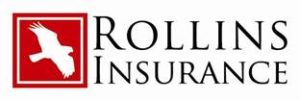 For most of us, health care costs seem to increase every year, and saving money on health insurance feels more and more out of reach. The typical American family of four paid more than $7,100 in health insurance premiums in 2017. That does not include out of pocket costs. Total medical cost, including premiums paid by employer, employee, and out of pocket costs come to a grand total of nearly $27, 000 for the typical American family of four on an average employer – sponsored plan. But if you think, maybe I will take my chances and not buy health insurance. Think again, medical debt contributes to nearly half of all bankruptcies in America. Not having the right health insurance sets you up for a financial disaster and in a medical crisis money is the the last thing you need you need to be worrying about.
For most of us, health care costs seem to increase every year, and saving money on health insurance feels more and more out of reach. The typical American family of four paid more than $7,100 in health insurance premiums in 2017. That does not include out of pocket costs. Total medical cost, including premiums paid by employer, employee, and out of pocket costs come to a grand total of nearly $27, 000 for the typical American family of four on an average employer – sponsored plan. But if you think, maybe I will take my chances and not buy health insurance. Think again, medical debt contributes to nearly half of all bankruptcies in America. Not having the right health insurance sets you up for a financial disaster and in a medical crisis money is the the last thing you need you need to be worrying about.
Proactive Steps You Can Take to Save Money
- Check out your options at work.
- Know how different plans work.
- Take advantage of a health savings account (HSA).
- Stay in-network when you can.
- Work with a health insurance professional
Calculating Your Health Insurance Costs
First of all there are different ways to encounter your health care costs. Your monthly payment and your out of pocket costs…
- The Premium – A health insurance premium is a monthly fee paid to an insurance company or health plan to provide health coverage. The average premium for a family of four is nearly $600.00 a month. The amount can vary depending on your specific health care plan.
- The Co-pay – A copayment or copay is a fixed amount for a covered service, paid by a patient to the provider of service before receiving the service. It is a flat rate that you pay as an insured person each time a medical service is accessed. If you go to your primary care physician and your copay is $45.00, you will owe $45.00 each time you see your primary physician. Every insurance plan may have a different co-pay amounts. You will have to check your plan to see the amount of your copay every time you make a doctor visit, go to a walk in clinic, or hospital emergency room or have a prescription.
- The Deductible – The amount you pay for covered health care services before your insurance plan starts to pay. After you pay your deductible, you usually pay only a copayment or coinsurance for covered services. Your insurance company pays the rest. As an example if your deductible is $1,500.00 you are responsible for paying for the first $1,500.00 of medical care.
Keep in mind that some health care will be covered and be paid even though you have not met your deductible. In most plans your payment of a co-pay to your physicians does not count towards your deductible. The specifics can vary depending on your plan. so that is why it is so important to understand exactly what your plan offers. - Coinsurance – Once you meet your deductible, your health insurance plan may not pick up 100% of the remaining cost. The percentage of costs of a covered health care service you pay (20%, for example) after you’ve paid your deductible. Let’s say your health insurance plan’s allowed amount for an office visit is $100 and your coinsurance is 20%. If you’ve paid your deductible, you pay 20% of $100, or $20.
- Out of Pocket Maximum – An out-of-pocket maximum is a cap, or limit, on the amount of money you have to pay for covered health care services in a plan year. If you meet that limit, your health plan will pay 100% of all covered health care costs for the rest of the plan year. As an example the 2017 out of pocket limit for a Health Insurance Marketplace individual plan is $7,150 and $14,300 for a family plan. In this example, if you have an injury and go to the emergency room and have a $2,000.00 deductible with 30% coinsurance and an out of pocket maximum of $7, 150. You need surgery and it costs $30,000. What should you expect to pay??
- You will pay the $2,000 it takes to meet your deductible
- Your 30% coinsurance means for the remainder of the cost $28,000 you will owe $8,400 that brings your total cost up to $10,400
- However since your out of pocket maximum is $7,150 you will only be responsible for $7,150.00. Your insurance covers 100% of the rest. After you pay your deductible, your insurance starts paying toward covered care you receive for the rest of the year. Additionally, depending on the service, the health care provider, and your insurance, you may still have a copayment for any covered care you receive.
Even with health insurance, your trip to the emergency room still cost a pretty penny. But as you see without your insurance you could be in debt for a long time if you had to pay the full cost of your accident. It is a good idea to compare all plans. It’s always best to have a meeting with a knowledgeable and experienced Health Insurance agent.
Rollins Insurance represents multiple A-rated insurance companies to make sure we deliver the most competitive rate packages to our clients in Kentucky and Ohio.
Contact us (859-781-7283) for more information or get a free quote!
—
 About Rollins Insurance
About Rollins Insurance
Rollins Insurance is an independent insurance agency providing our clients the best prices with the most coverage possible since 2008. We represent multiple A-rated insurance companies to make sure we deliver the most competitive rate packages to our clients in Kentucky and Ohio. We find that most people are under-insured and over-paying when we meet them. We love what we do and our primary business is Personal Auto, Homeowners, and Life and Health insurance. We are a family-owned and managed business that specializes in providing needs-based insurance services.
>> Learn More About Us and Our Staff
